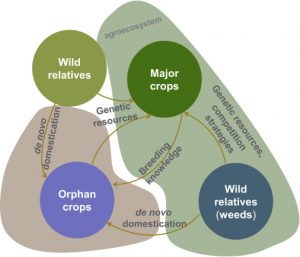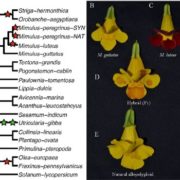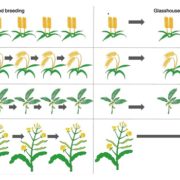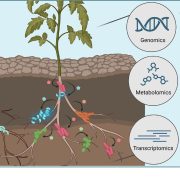Review: Orphan crops and their wild relatives in the genomic era (Mol. Plant)
 More than half of human calories come from rice, wheat, and corn, although many other cereals have been domesticated as food crops. Several of these “orphan” cereal crops and their wild relatives are being studied with the goal of diversifying our food supply, which is particularly important due to climate change. Ye and Fan review these efforts, using a few examples including several types of millet, oat, rye, wheatgrass, and wildrice species. The authors describe where the orphan crops were domesticated and are currently grown, and their beneficial traits such as better nutrient profiles and abiotic resiliency. Genomic studies of the orphans and their wild relatives are providing markers for breeding and identifying functional genes. Efforts to improve these crops through speed breeding, de novo domestication and gene editing are discussed, as are how insights from the orphan crops can be leveraged to improve major crops. (Summary by Mary Williams @PlantTeaching) Mol. Plant 10.1016/j.molp.2020.12.013
More than half of human calories come from rice, wheat, and corn, although many other cereals have been domesticated as food crops. Several of these “orphan” cereal crops and their wild relatives are being studied with the goal of diversifying our food supply, which is particularly important due to climate change. Ye and Fan review these efforts, using a few examples including several types of millet, oat, rye, wheatgrass, and wildrice species. The authors describe where the orphan crops were domesticated and are currently grown, and their beneficial traits such as better nutrient profiles and abiotic resiliency. Genomic studies of the orphans and their wild relatives are providing markers for breeding and identifying functional genes. Efforts to improve these crops through speed breeding, de novo domestication and gene editing are discussed, as are how insights from the orphan crops can be leveraged to improve major crops. (Summary by Mary Williams @PlantTeaching) Mol. Plant 10.1016/j.molp.2020.12.013









